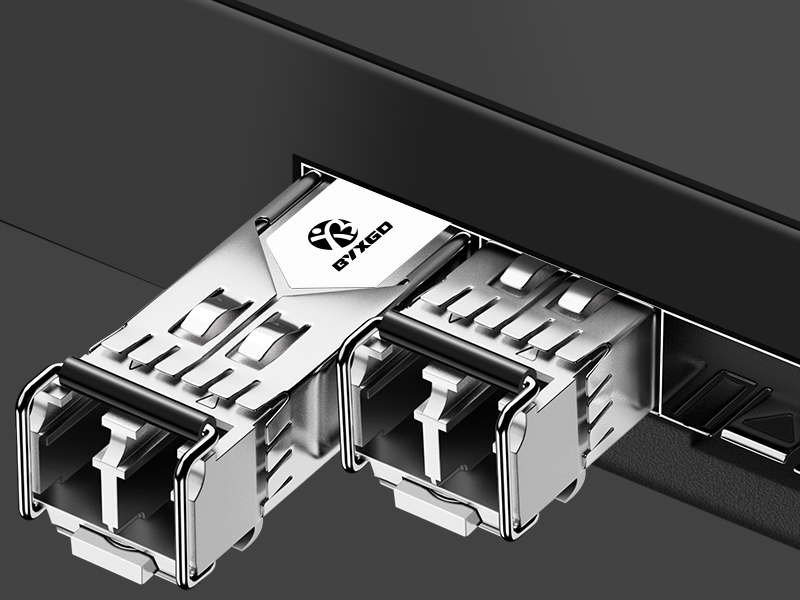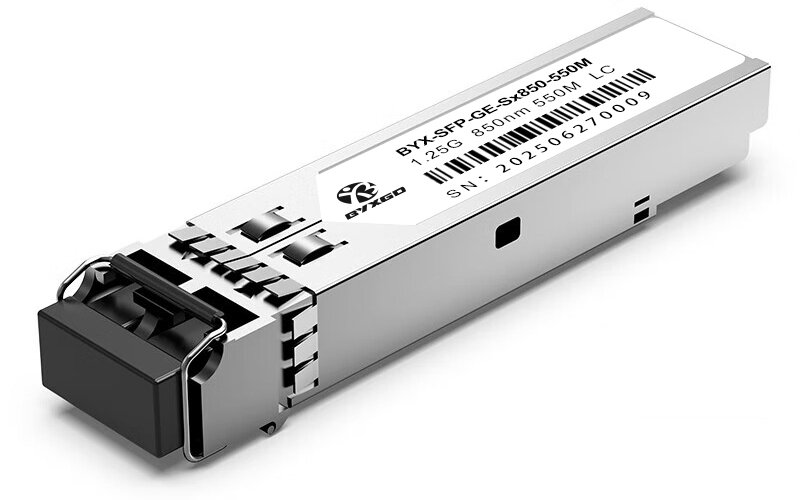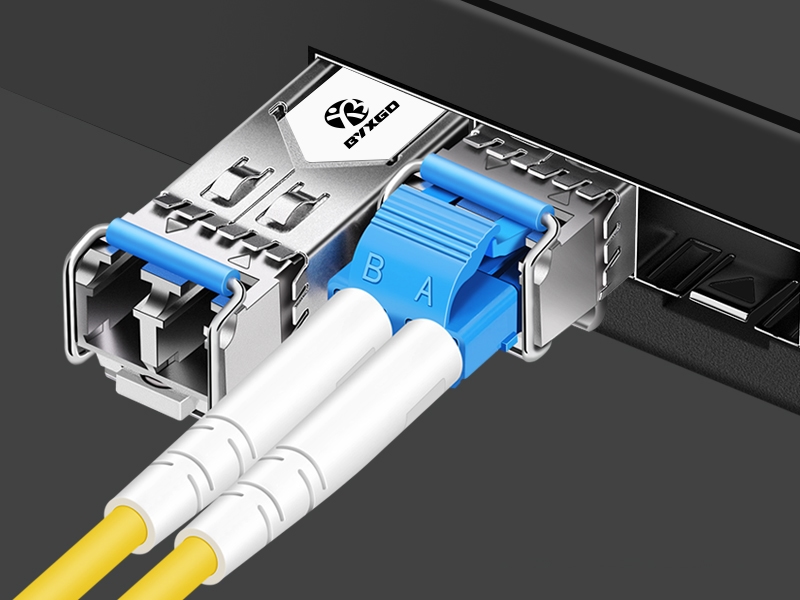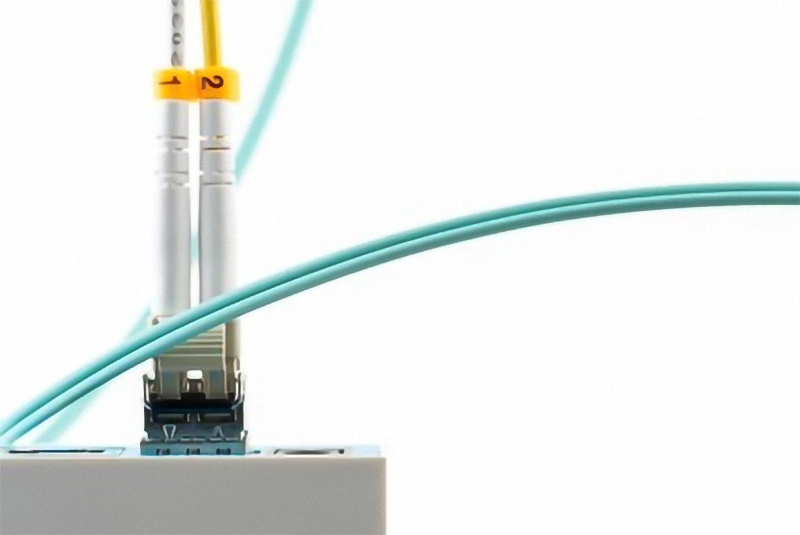Single Mode vs Multimode SFP Modules: Which One to Choose?

If you’re upgrading your network and deciding between single-mode SFP and multimode SFP modules, this can be more than just an equipment decision; it can impact your reach, performance, and budget! Knowing the basic differences, as well as the real-world scenarios, will help you ensure you’re making the right investment today and in the future. Continue reading for a side-by-side comparison of both, and take away some helpful tips for you!
Fundamental Differences and Use Cases of Single Mode and Multimode SFP Modules
Single-mode and multimode SFP modules will work differently based on the types of fiber cables they go with. The type of cable you use determines how the light travels, the distance you can run the signal, the cost, and the environment it is used in.
Fiber type and core diameter
Single-mode fiber has a small core (~9 microns), which essentially means that it transmits the light in a narrow unidirectional path. This minimizes modal dispersion (the spreading of light pulses), allowing for much longer communication and distance, generally in the tens of kilometers. Multimode fiber has a larger core size (50 or 62.5 microns) and allows for multiple paths of light to travel through the medium. It is not as suitable for longer distances (like single-mode) but allows for multiple paths of light to transfer communication with less light loss than single-mode.

Light Source and Wavelength
Laser diodes, for example, Distributed Feedback (DFB) lasers, drive single-mode SFP modules because of their precision and narrow spectral emission at wavelengths such as 1310 nm or 1550 nm. Multimode SFP modules utilize light-emitting diodes (LEDs) or Vertical Cavity Surface Emitting Lasers (VCSELs), typically emitting near 850 nm. The increased cost typically pays off and represents good value for money based on the overall performance over shorter reach increments.
| Feature | Single Mode SFP | Multimode SFP |
| Fiber Type | Single mode fiber (SMF) | Multimode fiber (MMF) |
| Core Diameter | ~9 microns | 50 or 62.5 microns |
| Light Source | Laser diode (DFB) | LED or VCSEL |
| Typical Wavelength | 1310 nm or 1550 nm | 850 nm |
| Max Transmission Distance | 10 km to 40+ km | Up to 550 meters |
| Cost | Higher upfront | Cost-effective upfront |
| Typical Use Cases | Long-haul, campus backbones | Data centers, LANs, shorter runs |
Representative Modules
1G SFP LX is representative of a single-mode SFP transceiver that is commonly used in campus or metro backbone networks and can support transmission distances greater than 10 km in length. 1G SFP SX is representative of a multimode SFP transceiver that is typically used in data center and enterprise LAN applications at transmission distances not to exceed 550 meters (under optimal multimode fiber conditions).
Why Differences Matter
Single-mode modules can push data out over long distances without affecting the integrity of the signal, which is especially important for large campuses or links located several kilometers apart. Conversely, multimode options are more prevalent in environments where short-distance installations are the norm, and total cost is the paramount consideration, including lower-cost cables, transceivers, and cheaper optics.
Having an understanding of these simple but very important attributes is paramount. When modules and fiber do not match up, the user can expect repetitive failures of their network along with associated downtime and increased maintenance costs, as well as reduced ability to scale. A good plan balances the realities of technology with the realities of budget, staffing, and infrastructure.
When you know how the fiber, core diameter, light source, and wavelength interact, you can guarantee their optical networks will perform as designed and serve the utility of cost and efficiency specific to them. This level of comparison lays the groundwork for maintaining a thoughtful, informed, and future-aware design for their network.

How to Make the Right Choice Based on Your Network Requirements
To begin, determine the distance you plan to transmit. Multimode SFP modules are normally rated up to 550 meters, which is best for short distances, such as in-building or data center connections. Single mode SFPs are the best option for longer distances, since they can maintain signal integrity over kilometers.
Next, consider any existing fiber infrastructure you have. If you already have single mode fiber installed, it is easy to integrate single mode SFP modules. If you have multimode fiber installed, multimode SFP modules are a better option because your infrastructure will function at maximum capacity sending multimode light through a multimode fiber optic cable.
Evaluate your budget and plan for future capacity. While single mode SFP modules may cost more upfront, they have longer distance flexibility and will provide better value as your network expands. Multimode SFP modules are not as expensive, so if you’re on a tight budget and the distance isn’t an issue, the multimode SFP module option may be the best option.
Do not make the common mistake of confusing your single and multimode modules with each other, as this will lead to link failure and added troubleshooting. Make sure to align the type of fiber-optic cables in the network with the SFP modules for a reliable and stable connection.
Following the steps outlined in this guide will help network professionals choose the best-fit SFP modules for their network requirements, weighing distance, cost, and compatible infrastructure toward the best overall network performance.
Troubleshooting: Compatibility and Link Troubleshooting for Single and Multimode SFP Modules
Compatibility has been the most prominent issue encountered when using SFP modules. The combined use of multimode and single mode SFP modules and fiber is among the most significant causes of failure.
The first example is a specific fiber deployed in the network (multimode or single mode) and an incompatible SFP that is not relevant to the light properties and fiber core. Mixing single mode and multimode can result in link failure and ultimately signal failure.
Using different SFP types on the same network also compromises the integrity of the signal. Mixing different SFPs or fiber types will lead to signal or data loss (blurring), and performance will degrade. It is important to ensure each type of SFP and fiber optics are aligned for a stable optical link.
Diagnosing any type of failure with the SFP modules starts with checking the condition of the device. Checking the status of the device can be done through the Command Line Interface (CLI) with commands that include show interfaces transceiver.
Additionally, those CLI commands or DDM or DMI will show the Tx/Rx optical power, and DDM or DMI will also show the Tx voltage, Rx voltage. DDM is typically accessed by the DDM/DMI menu.
At the above, abnormal readings could mean the link is broken, the connectors are dirty, or you could even be using the wrong fiber type. Fiber link maintenance is also important. Cleaning fiber connectors and inspecting cable length will assist in maintaining the integrity of signal quality.
Inadequate or inaccurate firmware can contribute to unexpected downtime, while replacing faulty modules is one way to maintain the integrity of the signal. Diagnosing compatibility of single mode or multimode SFP modules and figuring out the best action to resolve signal issues will ensure network admins troubleshoot their modules effectively while safeguarding the integrity of their network.

Frequently Asked Questions
What’s the difference between single mode and multimode SFP modules?
Single mode SFP modules operate on single mode fiber, which uses a smaller diameter core to transmit light over longer distances. A multimode SFP module has a larger diameter, and larger diameter based fibers operate at shorter distances as compared to single mode fibers.
Can single mode and multimode fibers or modules be mixed?
Short answer: No. Single mode and multimode optic fibers, or SFP modules, are developed with incompatible structure and light transmission properties. Mixing single mode with multimode fiber optic cable can cause signal loss and link failure.
What are the maximum distances of SX vs LX modules?
SX (multimode) SFP modules can typically transmit up to 550m. LX (single mode) SFP modules can support distances ranging from 10km to over 40km depending on the infrastructure.
How can I identify the fiber type installed?
You can visually inspect the cable to find the fiber markings; or you can use specialized fiber testing equipment to determine the fiber type.
How do the costs of multimode compare to single mode SFP modules?
Generally multimode SFP modules cost less upfront but would not achieve the same distance as a single mode SFP module. The cost of a single mode module is more expensive to begin, but the future savings regarding network reach and growth will outweigh the upfront cost of the SFP module.

Which has a larger impact on SFP module performance for an optical network: the wavelength, or fiber type?
Both the wavelength and fiber type contribute to the overall performance of single mode or multimode SFP modules. It is important to pair the correct module and fiber type to perform for maximum signal quality, or optimal distance.
What are some best practices for troubleshooting common fiber-to-SFP module mismatches?
Determine whether the fiber optic cable and SFP type match. Check the connector on both sides of the cabling have been plugged in securely. Use command line interfaces to check the Tx/Rx optical power and signal light reception levels. Also check if the fiber optic cable and SFP are compatible by reviewing firmware compatibility miscues.
Conclusion
Selecting the best SFP module for your infrastructure, single mode or multimode, will vary based on network performance, cost effectiveness and, scalability. Making an informed decision will allow for reliable and trustworthy connection and the opportunity for network growth down the line.
Take the time to shop product options that can fit your infrastructure, or reach out to technical support for a more personalized experience. Making your decision today for your optical network means you are laying the groundwork for uptime and sustainability in your network.
